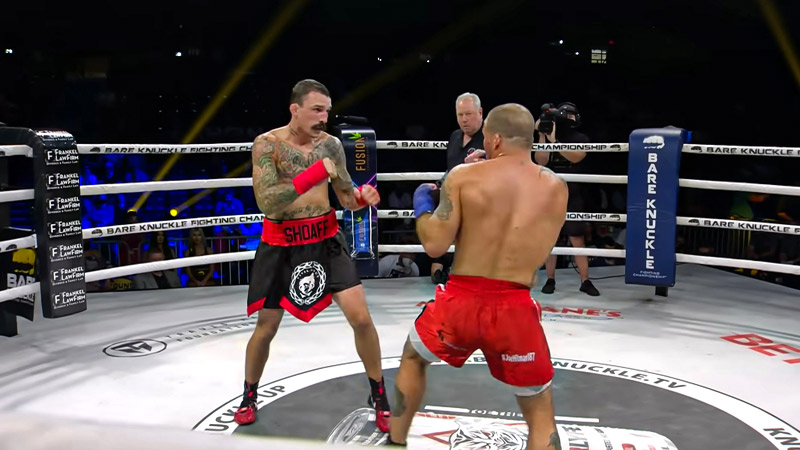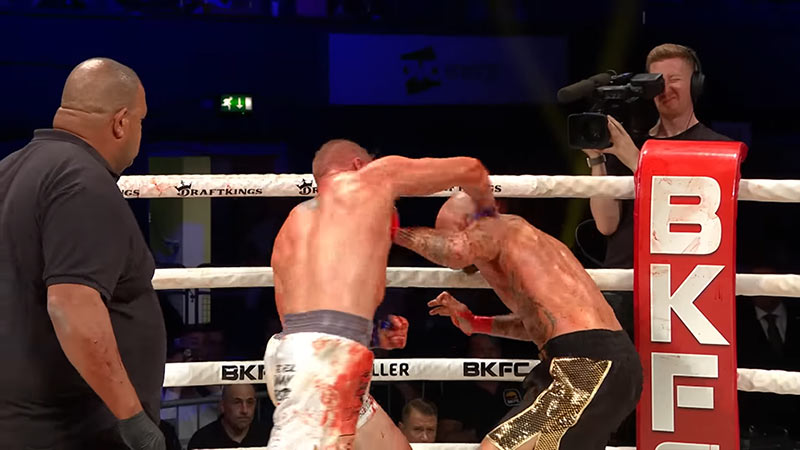Bare-knuckle boxing, a controversial and brutal combat sport, has garnered attention in recent years, prompting debates about its safety compared to traditional gloved boxing.
Proponents argue that, paradoxically, bare-knuckle boxing may be safer in some aspects. This perception stems from claims that without the padding of gloves, fighters are more inclined to employ defensive techniques, thereby reducing the frequency of powerful, head-jarring punches.
Additionally, proponents contend that the absence of gloves may limit hand and wrist injuries.
However, this apparent safety must be weighed against the increased risk of facial trauma and the long-term health consequences.
To evaluate the safety of bare-knuckle boxing, a comprehensive examination of its pros and cons is essential.
Is Bare Knuckle Boxing Safer?
No, bare-knuckle boxing is not safer than traditional gloved boxing.
No, unequivocally, bare-knuckle boxing is not inherently safer than traditional gloved boxing.
This assessment is grounded in several key factors that collectively emphasize the elevated safety concerns associated with bare-knuckle boxing.
Here are the reasons why bare-knuckle boxing is not safer than traditional boxing:
Increased Risk of Cuts and Abrasions
In bare-knuckle boxing, fighters step into the ring with their bare hands exposed to their opponents.
The absence of gloves and hand wraps leaves their knuckles and fingers susceptible to a higher risk of cuts, abrasions, and bruises.
These injuries can be painful, and debilitating, and may lead to infections if not adequately treated.
Greater Risk of Hand and Wrist Injuries

The absence of padding in bare-knuckle boxing exposes fighters to an increased likelihood of hand and wrist injuries.
These injuries may include fractures, dislocations, and sprains, as the human hand is not designed to withstand the repeated impact of bare-knuckled punches. Such injuries can have long-term consequences for a fighter’s career.
Facial and Head Trauma
The lack of gloves also means that fighters in bare-knuckle boxing are more vulnerable to facial and head injuries.
This can result in a higher frequency of facial cuts, swelling, and head trauma, ultimately increasing the risk of long-term neurological damage.
Reduced Defense Techniques
The absence of gloves in bare-knuckle boxing can influence fighting styles. Fighters may be more inclined to guard their faces and heads to minimize the risk of facial injuries, potentially leaving their bodies exposed to strikes.
This shift in technique can result in an increased risk of injuries to areas like the liver and ribs.
Limited Regulation
Unlike traditional gloved boxing, bare-knuckle boxing often operates with fewer regulations and safety standards.
This can lead to fighters participating in matches with less oversight and potentially inadequate medical support in case of injuries. The lack of a unified governing body can also lead to inconsistencies in safety protocols.
Longer Recovery Times
Injuries sustained in bare-knuckle boxing may take longer to heal due to their often more severe nature.
These injuries can necessitate more extensive medical attention and rehabilitation, leading to prolonged recovery periods and a potentially more significant impact on a fighter’s overall career and well-being.
How Dangerous Is Bare Knuckle Boxing?

Bare-knuckle boxing, also known as “prizefighting” or “bare-knuckle fighting,” is a form of combat sport that involves fighters engaging in boxing matches without the use of padded gloves, unlike the more conventional gloved boxing that we are familiar with.
This raw and ancient form of combat has experienced a resurgence in popularity in recent years, particularly in underground and unsanctioned events.
While some proponents argue that it’s a test of true grit and skill, bare-knuckle boxing is undeniably dangerous and raises significant concerns regarding the safety of its participants.
Here are some reasons why bare-knuckle boxing is considered dangerous:
Increased Risk of Cuts and Abrasions
In bare-knuckle boxing, fighters are more likely to sustain cuts, abrasions, and facial injuries compared to traditional gloved boxing.
Without gloves to protect the hands, fighters are more prone to injuring their fists when striking their opponent’s head or body.
This can lead to open wounds, which not only cause pain but also increase the risk of infection due to contact with blood and sweat.
Greater Risk of Facial Trauma
Bare-knuckle boxing can result in more severe facial injuries, including broken noses, fractured orbital bones, and extensive bruising.
The absence of padding on the fists and the constant exposure of the fighters’ faces to hard punches significantly heightens the risk of facial trauma, which can have long-lasting effects on a fighter’s appearance and health.
Increased Risk of Hand and Wrist Injuries
While gloves in traditional boxing serve to protect a fighter’s hands and wrists, in bare-knuckle boxing, the risk of hand and wrist injuries is significantly higher.
Fighters are more prone to fractures, dislocations, and other trauma to their hands and wrists, which can lead to long-term complications and even end a fighter’s career.
Potential for Brain Trauma
The fundamental goal of any combat sport is to strike the opponent and score points or achieve a knockout.
In bare-knuckle boxing, the risk of causing concussions and other forms of brain trauma is considerable.
Even though the intention may be to protect the head, fighters can still land powerful punches to the skull, which can result in traumatic brain injuries over time.
Less Regulated and Sanctioned
Unlike conventional boxing, which is highly regulated and sanctioned by governing bodies that enforce strict safety standards, bare-knuckle boxing often takes place in underground or less-regulated settings.
This lack of oversight can lead to inconsistent medical supervision, inadequate pre-fight medical examinations, and limited post-fight medical care, further increasing the dangers involved.
Longer Recovery Period
Due to the severity of injuries and trauma sustained in bare-knuckle boxing, the recovery time for fighters is often longer compared to gloved boxing.
Prolonged recovery can result in a reduced quality of life for fighters and may have long-term implications for their overall health.
FAQS
What is BKFC?
BKFC stands for Bare Knuckle Fighting Championship. It is a promotion and organization that specializes in bare-knuckle boxing events.
Is bare-knuckle boxing safer than boxing?
The safety of bare-knuckle boxing compared to traditional gloved boxing is a matter of debate.
Some argue that it may be safer due to less head trauma, while others highlight increased risks of facial and hand injuries.
Is bare-knuckle boxing dangerous?
Yes, bare-knuckle boxing is considered a dangerous sport.
It poses risks such as facial trauma, hand injuries, and potential long-term health consequences due to the absence of glove padding.
What is bare-knuckle MMA?
Bare-knuckle MMA (Mixed Martial Arts) is a variation of MMA where fighters compete without gloves, similar to bare-knuckle boxing.
It combines elements of traditional MMA with the unique rules and challenges of bare-knuckle combat.
Are there any potential long-term health consequences for bare-knuckle boxers?
Yes, the increased risk of facial trauma and hand injuries may have long-term health implications for those involved in bare-knuckle boxing.
To Recap
The safety of bare-knuckle boxing remains a subject of ongoing debate. While proponents argue that it might be safer due to reduced head trauma and an emphasis on defensive techniques, the sport’s inherent risks are undeniable.
The absence of glove padding can lead to an increased incidence of facial injuries and hand trauma, with potential long-term health consequences.
Ultimately, the perceived safety or danger of bare-knuckle boxing depends on various factors, including the rules and regulations in place, the fighters’ techniques, and the quality of medical supervision.
To accurately assess and enhance the safety of this sport, continued research, stringent safety measures, and comprehensive regulations are essential.







